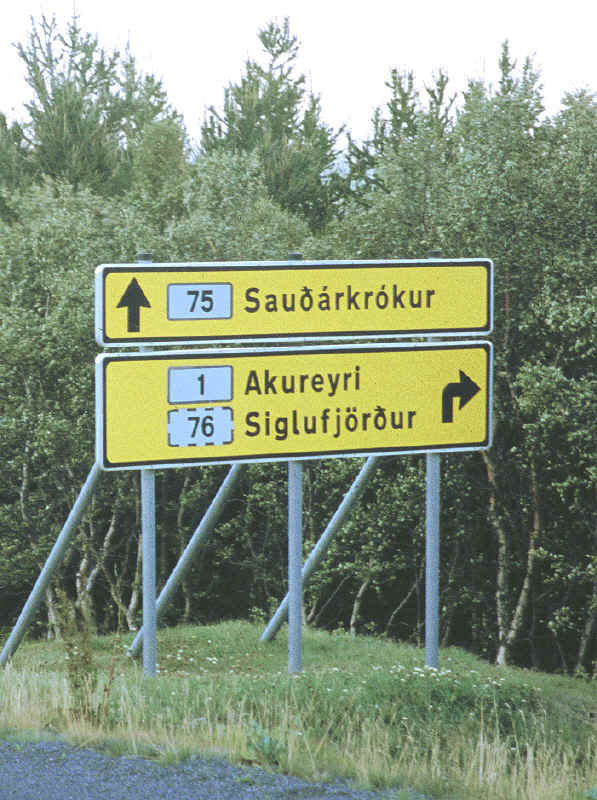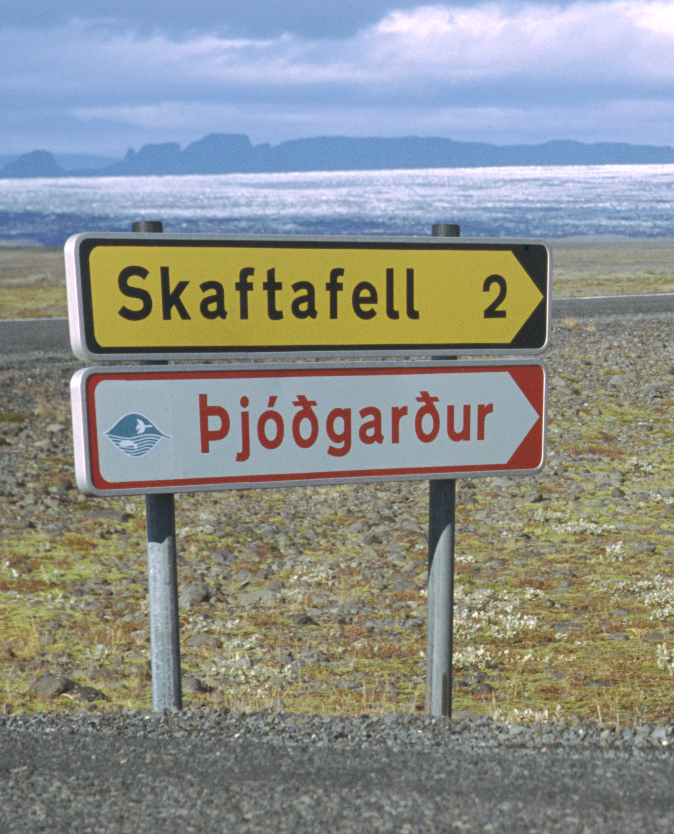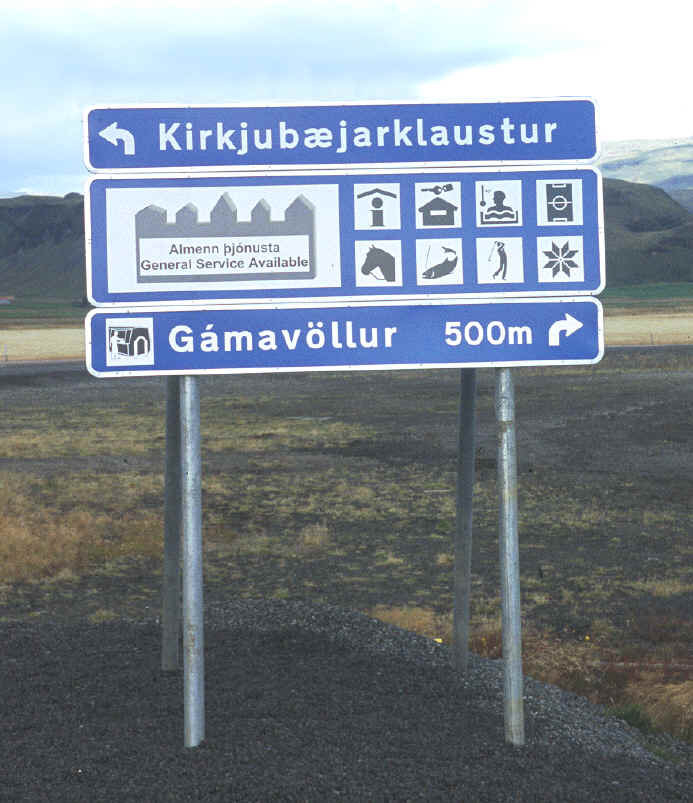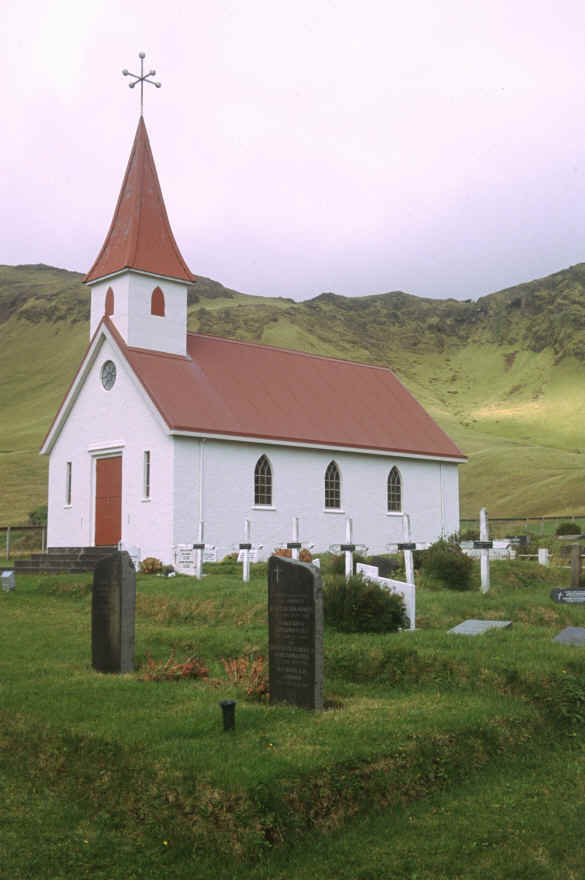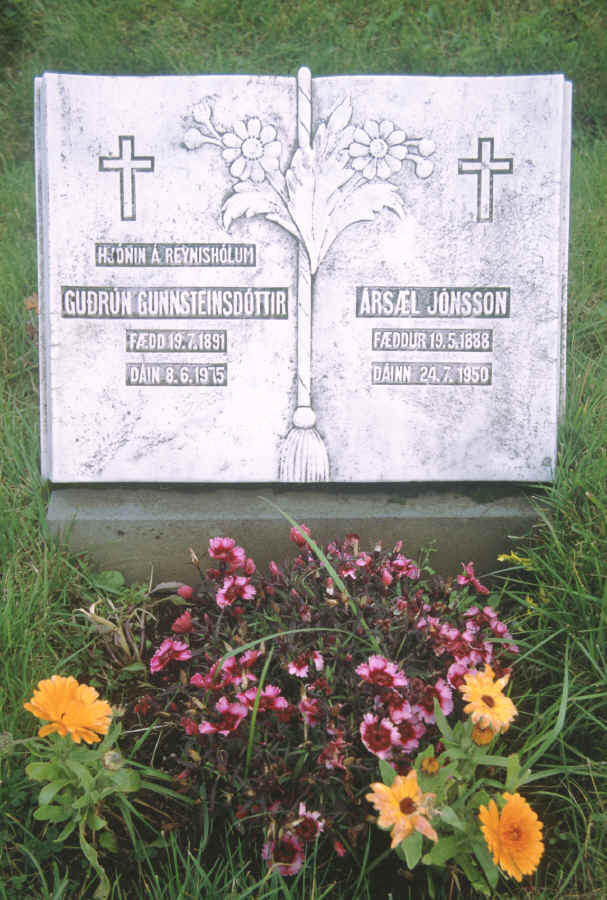
It seems like
whenever I show my slides of
A man gets his last name by taking the first name of his father, and adding the
ending "-son" to the father's name. So below, the man named Ársæl was
the son of a man named Jon, so his whole name is Ársæl Jonsson.
His wife, Guðrún, was the daughter of a man whose first name was Gunnstein --
so her last name is Gunnsteinsdóttir. When two Icelanders get
married, the wife does not take the last name of the husband; that would make no
sense. Guðrún did not take her husband's last name Jonsson, because she
was not
the son of Jon. She was Gunnstein's daughter, so she stays
Gunnsteinsdóttir all her life!

When Ársæl and Guðrún had children, they didn't take the last name of
either of their parents. Their son Einar took his father's first name +
son, so his last name is Ársælsson.
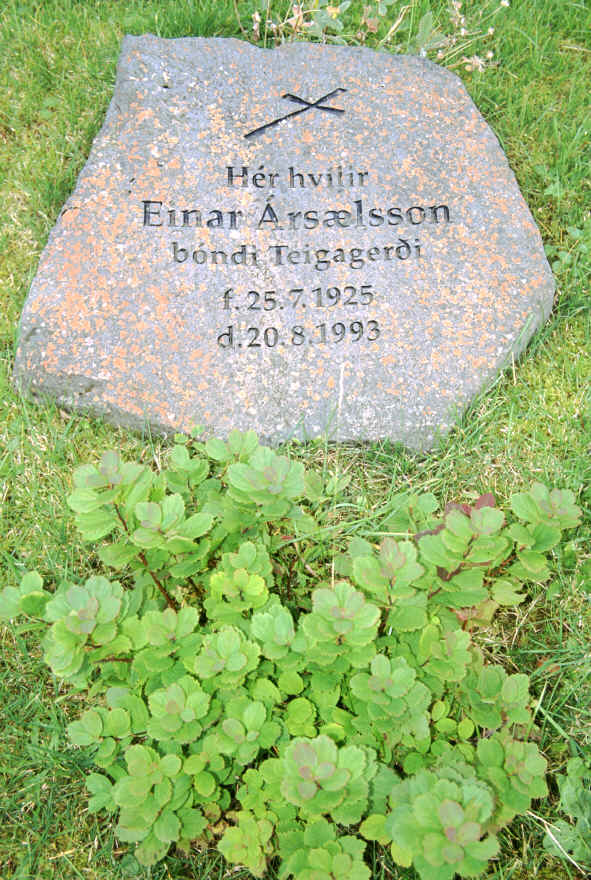
And
when Ársæl and Guðrún had a daughter, Sigríður, her last name became
Ársælsdóttir.
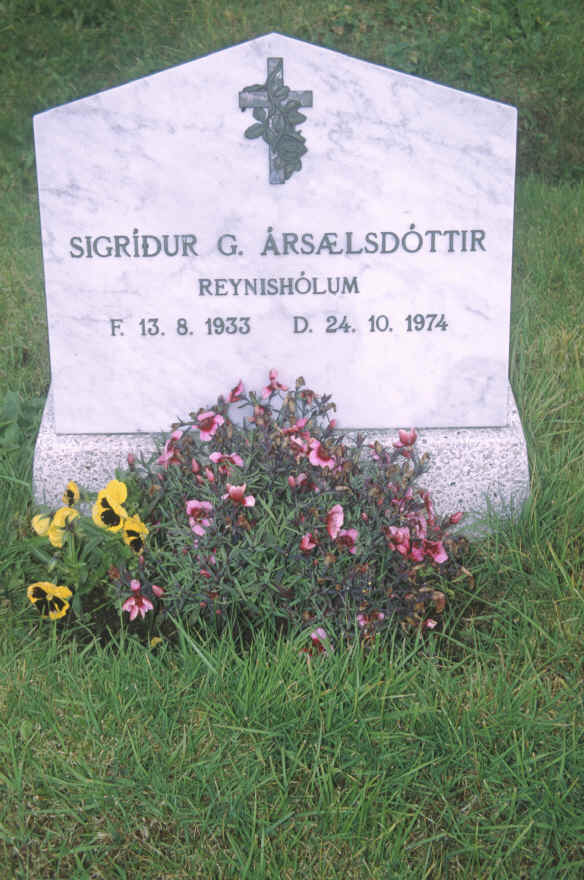
So this family of four had four different last names. The law in
A
title such as Mr. or Dr. would not be attached to a person’s last name, but to
the first, or to both names. The
cultural meaning of an Icelander's last name is not that it is a part of one's
name, but a short description of who one is.
If for some reason the mother doesn't wish a child to take the name of its
father in its last name, it is legal for the child to take the mother's name...
so a last name such as Helgasson or Katrínsdóttir
would be possible.
In addition to having odd letters such as ö and æ, Icelandic is the
only language in the world to use the two additional letters þ
and ð (capitals Þ and Ð). Þ and
þ are pronounced like “th” in “thick and thin”.
Ð and ð are pronounced like “th” in “this and that”.
It is also the only language besides English to have both of those
sounds, they are actually very rare sounds in world languages.
So you can get some strange-looking words such as the towns below.
They also seem to like very long words!
